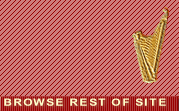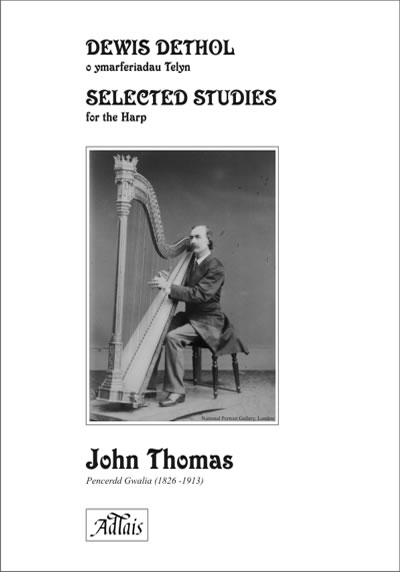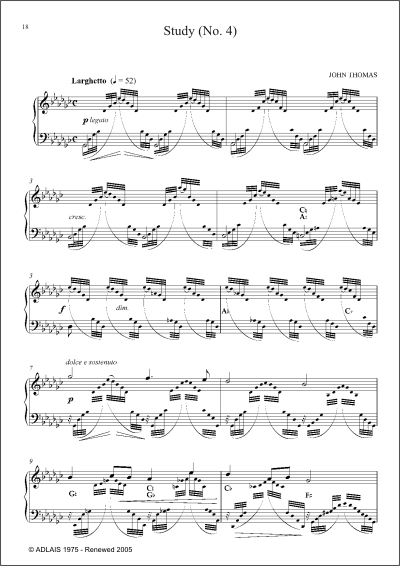 |
|||
| |
of Harp Music |
| © 2004-2025 ADLAIS |
| Dewis
Dethol o Ymarferiadau Telyn Selected Studies for the harp John Thomas Pencerdd Gwalia (1826-1913) |
return to previous page |
 |
Work: | 4 studies for solo harp |
| Catalogue No: | Adlais 003 | |
| ISMN: | 979-0-57032-002-8 | |
| Edition: | September 2005, A4 stapled | |
| Suitable for: | Grade 6-8 pedal harp | |
| Price:: | £12.00 Go to shop | |
| Examination: | ABRSM Grade 8 List C (from
2005) No. 2 in Bb minor or No. 4 in Gb LCM Grade 8 List A (2014-2016) - No. 2 in Bb minor TRINITY Grade 8 Group B - No. 4 in Gb (2010-2012) |
|
| See all Adlais Publications including transcriptions by John Thomas | ||
JOHN THOMAS was born in the parish of Coity, Bridgend, on St David's Day, March 1st 1826, the eldest son of John and Catherine Thomas. His music-loving father - a tailor by trade - bought him a triple harp, which by the age of twelve he had mastered so well that, in October 1838, he won the principal competition at the Abergavenny Eisteddfod. With the artistic patronage of Ada, Countess of Lovelace, daughter of the poet Byron, he entered London's Royal Academy of Music, where he studied the double-action pedal harp with John Balsir Chatterton. This meant a complete change of technique; whereas before John Thomas had placed the triple harp on his left shoulder in the traditional manner, playing the treble with the left hand and the bass with the right hand, now he was obliged to rest the harp on his right shoulder, using the right hand to play the treble and the left hand to play the bass. In the course of time, a long and distinguished professional career took John Thomas all over Europe, starting in 1851. He also visited the United States, where his dramatic cantata Llewelyn was performed at the Chicago World Fair. His teaching career culminated in his being appointed professor at the Royal Academy of Music, and in 1871 he was appointed Harpist to the Queen. He took great pride in the bardic title Pencerdd Gwalia (Chief Musician of Wales) bestowed upon him by the National Eisteddfod. His compositions for the harp are very well-written, and to this day, remain extremely popular with harpists and audiences alike. The four studies selected for this volume include his unique Study for the Left Hand, and are taken from the series of twelve which he composed between 1863 and 1868, and which were originally published by Hutchings and Romer. 1. Study - Allegro con brio. In the previously unknown cover portrait by Elliott and Fry, John Thomas plays a special Gothic model harp made for him in London by the firm of Sebastian and Pierre Erard. The copyright property of the National Portrait Gallery, the photograph is reproduced by kind permission. |

